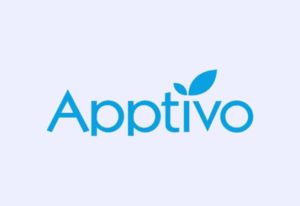- Lead Management
- Pipeline Management
- Activity Management
- Automation
- Sequences
- Built-In Calling
- Product Management
- Reports
1. Lead Management
Salesmate’s lead management features are a bit lackluster and heavily dependent on your app closet. For example, while the software does not have a webform or popup builder of its own, it integrates with several third-party builders to capture incoming leads from your website. Likewise, there is no way to qualify or score inbound leads. You will have to either use another app or your sales acumen for that. What Salesmate does give you in this department is the ability to segregate your leads and then assign them to appropriate sales reps for follow-up actions.
2. Pipeline Management
While the software is lightweight in the lead nurturing, capturing, and qualification department, the story changes entirely once a lead is in your pipeline. Salesmate offers users exemplary and easy pipeline management. For one, while the platform offers you a default pipeline with five stages, you can set up a custom pipeline that reflects your business’ sales cycle. There is no limit on the number of stages you can add to a pipeline. Once set up, you can reorder the stages by dragging or editing them. What’s more, the software allows you to configure and manage multiple pipelines, a boon for businesses with different sales departments.
The software’s pipeline view is a very visual and user-friendly one. It is like a Trello board in that each stage is represented as a separate column. This gives it an easy functionality where you can simply drag-and-drop a deal from one column to another when you want to move it down the pipeline. Within each deal, you can assign a monetary value and estimated close date, loop in the appropriate sales reps, and attach any necessary files or emails to it. Also, you can add notes and create follow-up activities such as scheduling a phone call or setting up a meeting with a client. A bonus is that once you have scheduled an activity, you can send a calendar invite or an email to your client right from within the deal itself.
3. Activity Management
By default, Salesmate comes with four activity types. These are calls, tasks, meetings, and demos. However, you can add an unlimited number of custom activities. In addition, you can configure outcomes for each activity, so your sales team can quickly record what happened with each and move on to the next task at hand. The software allows you to start and schedule activities from almost every page, be it from a contacts page, company page, or the deals dashboard. It also gives you a to-do list view of all your scheduled activities, making it easier for you to plan them. Notably, you can configure a two-way sync of your activities calendar with your Microsoft and Google calendars to ensure there are no overlaps.
4. Automation
This being a core value of the software, it had better be a robust one. Thankfully, Salesmate does not disappoint in this area. The platform has several automation features that take care of administrative and repetitive tasks. First, you can set up workflows to automate a host of activities, from automatically enrolling a contact from a web form to automatically assigning leads to employees based on different criteria such as location, department, or experience. Second, you can set triggers to spontaneously create activities as the lead moves from one stage of the pipeline to another. The software then automatically tracks each activity, so managers have clear oversight over scheduled activity versus overdue ones.
Third, you can set up activity or follow-up reminders, so nothing falls through the cracks. The software will send you in-app, email, and push notifications at the set date and time, reminding you of the task at hand. Finally, you can automate the process of sending sales emails to your customers. This way, the system takes care of promotional tasks such as sending a welcome email or a birthday/anniversary wish without you having to remember to do so. Another time-saving feature here is that you can set up smart reminders that notify you if a customer hasn’t opened or replied to an email even after a set number of days so that you can plan a follow-up accordingly.
5. Sequences
One of their latest feature additions, Salesmate’s Sequences tool, is an extension of their sales automation module. With it, you can set up email and text drip campaigns with as many stages and activities as you like. As per the nature of your business, you can set delays between two activities to ensure that you are communicating with your clients regularly too. What’s nice here is that you can add both email and text messages to your campaign.
Since text messages have a proven higher open rate than emails, this is a nice way to ensure your customers are reading your communication. In addition, you can tailor and personalize the emails and texts, which is another way the software helps increase the likelihood of customer response. Once a sequence is set up, the platform allows you to bulk enroll customers into it. Importantly, even if you have clients in different parts of the world, the software sends out your communication only at the optimal time in each customer’s time zone.
6. Built-In Calling
Salesmate boasts of a robust in-built telephony system that allows you to make outbound calls and receive inbound ones without having to set up any additional equipment. The software enables you to purchase toll-free numbers from them so your customers can place free calls to you. These cost an additional $1.10/number/month along with standard call rates. You can also purchase multiple local numbers to assign to your employees.
Using these, sales reps can initiate an outbound call either from their browser or phone with a single click. With incoming calls, the platform identifies the caller and pulls up their customer profile, complete with smart insights and communication history, so reps know who they are dealing with. Besides, you can decide how incoming calls are handled, either routing it sequentially or simultaneously to your sales employees until one of them picks.
There’s a ton of activity that reps can do while attending a call. If the caller is new, they can easily create a contact on the fly. Furthermore, they can add pertinent notes and schedule a follow-up call while talking too. The platform also allows you to record calls for quality control purposes automatically. The recorded calls are archived as MP3 files for you to go through later. Other telephony features include call-forwarding, recording a custom welcome greeting or a voicemail message, and call transfer capabilities.
7. Product Management
The software’s product management feature is a useful tool for businesses that sell products and services. It allows you to keep an inventory-like list of your items, furnished with details such as a name, description, image, SKU code, and a sales price. As with most of its features, you can add an unlimited number of custom fields to the product form if you are not happy with the default ones that the software offers.
In addition, Salesmate allows you to store multiple variations of a product as well. For example, you can add a phone with different internal memory variants. You can also set up different prices for a product in various currencies based on a customer’s location. This is especially beneficial for businesses that have a worldwide clientele. Importantly, you can associate a product with a deal, in which case, the intuitive software automatically adds the product price to the overall deal value.
8. Reports
This CRM platform’s reports tool syncs data from all the other modules in real-time to give you up-to-date business information. It has around 20 standard reports in 6 different categories. These give you an analytical insight into areas such as activities, deals, sales, pipelines, customers, and email performance. Each category has around three to four subdivisions that allow you to track key sales-performance indicators that give you an overview of the health of your business.
If that isn’t enough for you, you can use the software’s report builder to generate custom reports. Here, you can include whatever module or submodule that you want. The app also has a plethora of filters you can use to customize these reports further. What’s more, you can choose to generate a visual representation of your reports using columns, funnels, line or bar graphs, and pie charts. Generated reports can be downloaded as a CSV file.




